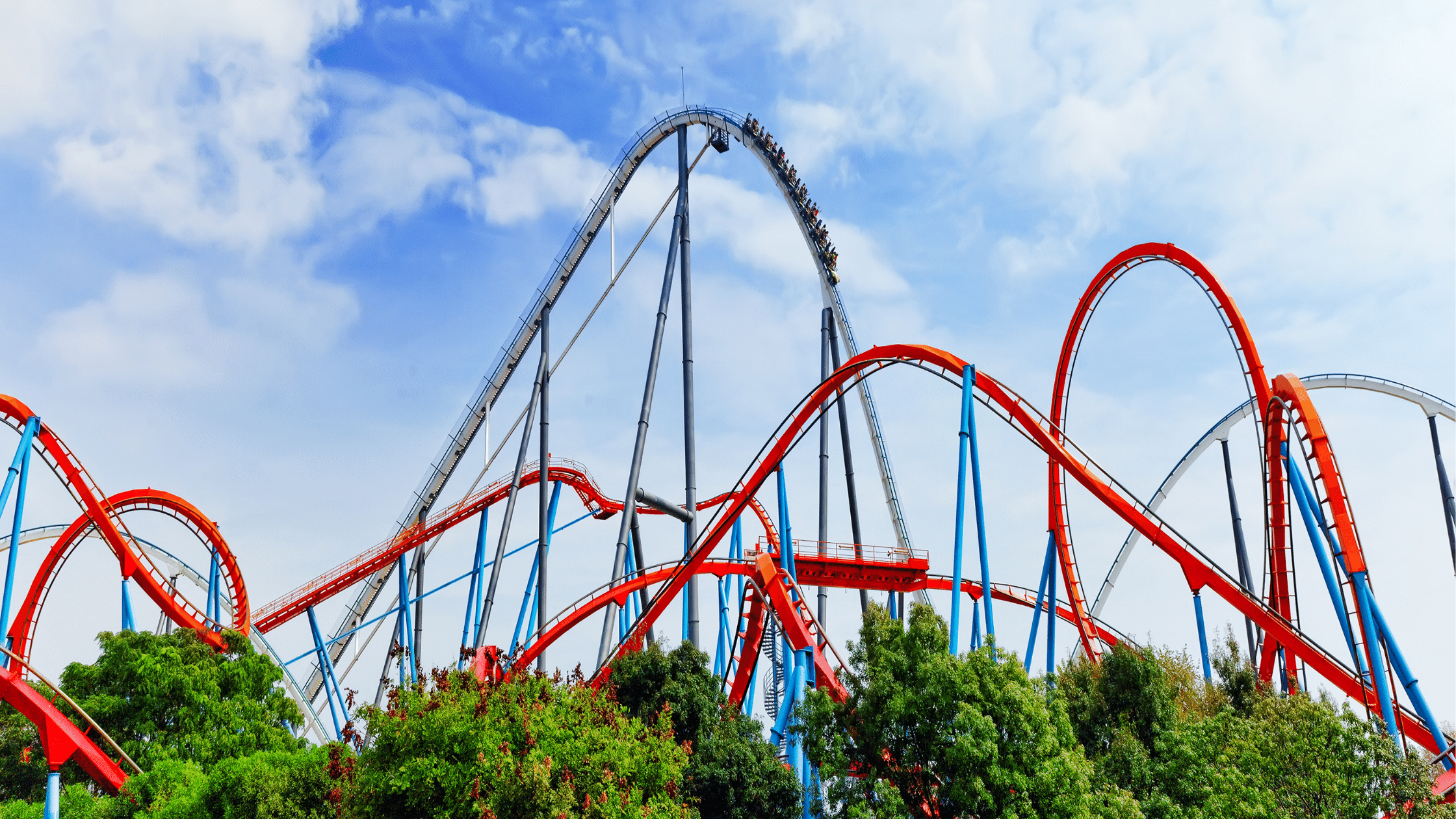You must have ride Roller coaster or Ferris wheel in the amusement park. Its up and down and moving in the circle must have thrilled and fascinated you Today I would like to give brief details about those machines and how you feel different in those rides. So this article is about the Physics of Amusement Park’s.
Ferris Wheel:

The Ferris wheel consists of an upright wheel with passenger gondolas (seats) attached to the rim. These gondolas can freely pivot at the support where they are connected to the Ferris wheel. As a result, the gondolas always hang downwards at all times as the Ferris wheel spins.
Ferris wheel physics is directly related to centripetal acceleration, which results in the riders feeling “heavier” or “lighter” depending on their position on the Ferris wheel.
At every point in the ride, you are acted by the Normal Contact force and Gravity, Since your body moves in a vertical circular motion, The combination of Normal and gravity needs to provide the necessary centripetal acceleration at each point. The feels you get in the ride are because of the varied amount of normal force on your body.
Lets us analyze the top and bottom position of the Ferris wheel.
Top position: Your weight acts downward And Normal force acts Upwards. The resultant of its provide the necessary downward centripetal force.
So,
Nu-mg=-ma
or
Nu=mg-ma
Bottom position: Your weight acts downward And Normal force acts Upwards. The resultant of its provide the necessary upwards centripetal force.
So,
Nd-mg=ma or Nu=mg + ma
Normally the contact force on your body is N=mg
So
Nd > N > Nu
So you feel lightest at the top and heaviest at the bottom.
Roller Coaster

A roller coaster is a machine that uses gravity and inertia to send a train of cars along a winding track. This combination of gravity and inertia, along with G-forces and centripetal acceleration gives the body certain sensations as the coaster moves up, down, and around the track. The forces experienced by the rider are constantly changing, leading to feelings of joy in some riders and nausea in others.it has many variations, but all involve going around loops, bends, and twists at high speed.
The typical roller coaster works by gravity. There are no motors used to power it during the ride. Starting from rest, it simply descends down a steep hill, and converts the (stored) gravitational potential energy into kinetic energy, by gaining speed. A small amount of the energy is lost due to friction, which is why it’s impossible for a roller coaster to return to its original height after the ride is over.
The roller coaster uses a motorized lift system to return to its original position at the top of the initial hill, ready for the next ride.
The law of conservation of energy states that energy can neither be created nor destroyed, thus, the purpose of the ascent of the first hill is to build up potential energy that will then be converted to kinetic energy as the ride progresses. The initial hill, or the lift hill, is the tallest in the entire ride. As the train is pulled to the top, it gains potential energy, as explained by the equation for potential energy
Some other part which works in roller coaster Once you’re underway are different types of wheels help keep the ride smooth. Running wheels guide the coaster on the track. Friction wheels control lateral motion (movement to either side of the track). A final set of wheels keeps the coaster on the track even if it’s inverted. Compressed air brakes stop the car as the ride ends
Now let’s deal it with some maths
Assuming no friction losses, when the center of mass of the roller coaster falls a vertical height h (from the initial hill) it will have kinetic energy equal to the gravitational potential energy stored in the height h.
PE=mgH KE= (1/2)mv2
Assuming no losses and applying the law of conservation of energy
mgH=(1/2)mv2
v =(2gH)1/2
Now the roller coaster also goes on the circular bend, Now since it is circular, the rider will experience centripetal acceleration. What really happens is the track’s curve prevents the object from following the straight line it otherwise would, by applying a force on it (via its outside edges) towards the center of the circle, forcing it to travel in a curved path instead. This centripetal (center-seeking) force actually points toward the center of the circle, but a roller coaster rider experiences it as centrifugal force, a force pushing them toward the outer edge of the car.
The centripetal acceleration is given by
a= v2/R
Where v is the speed of the rider and R is the radius of the loop
In summary, the physics of roller coasters (in general) is a combination of gravitational potential energy converted into kinetic energy (high speed), and using this speed to create centripetal acceleration around different portions of the track.
Carousel
A merry-go-round at an amusement park

The carousel is a delicate balance of motion and forces. All of the horses move through one complete circle in the same amount of time. The horses on the outside of the carousel have to cover more distance than the inside horses in the same amount of time. This means the horses on the outside have a faster linear speed than those at the hub
On some carousels, the horses go up and down in a galloping motion simulating what it might be like to ride a real horse. For these carousels, the ride designer had to approach the problem of movement around the central axis differently. In a normal carousel, each horse maintains a constant acceleration, radius, and tangential speed (speed tangent to the circular path of the carousel). If you add a gallop to some of the horses, you must consider the forces needed to change that horse’s position upward or downward as it goes around the track. In designing with these forces in mind, you also need to take into account the mass of the horse and its rider.
The net force on the body provides the required centripetal forces towards the center. The net force is provided by the normal force from the seat.

Successful